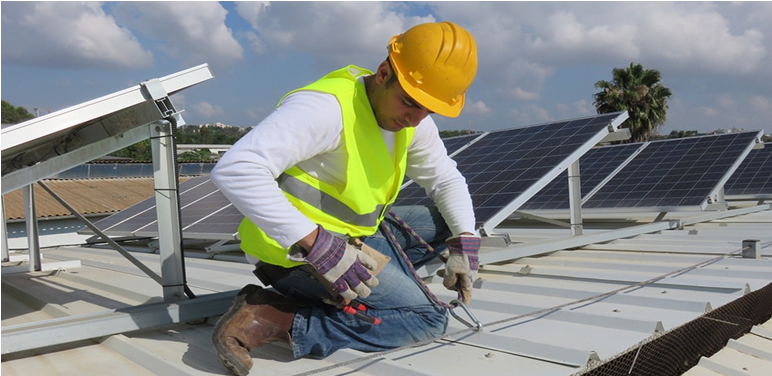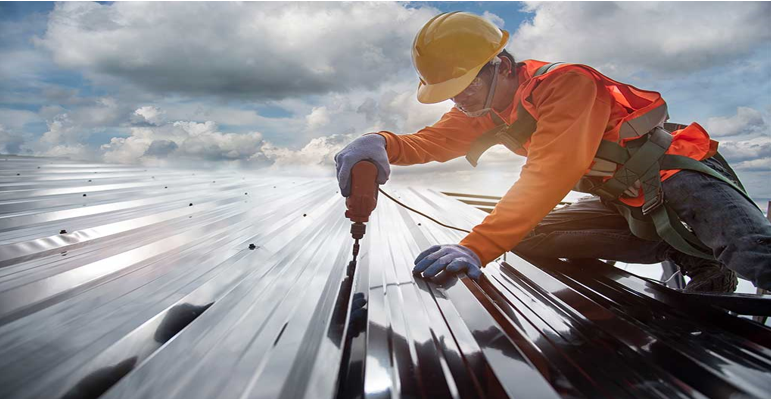
While residential and commercial roofing systems share the same primary purpose of protecting a residence or property from various elements, that is where the similarities end. The biggest difference between the two is the slope of the roof, which is decided by the property’s size. Since residential properties are a lot smaller, they usually have steep-slope roofs that are visible from the ground.
They also use materials like asphalt shingles, slate, and architectural tiles. Given the commercial building’s bigger size, roofs on these properties tend to have slightly sloped or flat roofs that are not noticeable from the ground. Commercial roofs come in various ranges of materials that are pre-determined by the building’s structure, as well as other factors like extreme cold, intense heat, and other climatic conditions, or if surfaces need to withstand high human traffic.
Modern technology and commercial roofing materials
Contractors need to keep up with the advancement in commercial roofing technology. They need to be knowledgeable about the best solutions based on the clients’ needs and their projects. In recent years, new products have been introduced that can provide high resistance to extreme temperatures and optimize environmental productivity, helping them minimize storm-water runoff, as well as cooling and heating expenses.
Choosing the right roofing system
There are a lot of factors, people need to consider when choosing the kind of commercial roofing system business owners need for their properties. They need to consider the sort of facility they are working with for various types of businesses need certain planning. Becoming familiar with different kinds of available systems in the market will help property owners in their decision-making process.
The shape of the roof
With these types of roofing systems, addressing the slope is very important. These things are classified as flat or low slope or steep-slope roofs.
Low slope – These systems are very common among big-box stores, shopping centers, and warehouses. There are various options for flat roofs like Thermoplastic Olefin, Polyvinyl Chloride, or Ethylene Propylene Diene Monomer with this system.
Check out this site for more details about Thermoplastic Olefin.
Steep slope – These systems are usually seen on multi-family or single homes that in commercial properties. With this structure, popular materials include tile, slate, metal, or shingles.
Types of commercial roofing structures
Once business owners have identified the slope, they are ready to choose the kind of system that best meets the property or business’s needs. Listed below are some common commercial roofing structures.
Single Ply
This structure uses Thermoplastic Olefin, Polyvinyl Chloride, or Ethylene Propylene Diene Monomer. They are pretty flexible and strong materials preferred by most building owners since it resists cracking, peeling, as well as other kinds of weathering. Its main characteristic is that they are made to be installed in single layers. There are two categories in this industry – thermoset membranes and thermoplastic membranes.
Thermoplastic Polyolefin or TPO
This type of material is usually used in low-slope roofs and includes reinforced sheets that feature highly reflective and heat-welded seams. It is a single-ply membrane, usually composed of ethylene-propylene and polypropylene rubber that has been polymerized together.
Thermoplastic Polyolefin is part of a thermoplastic membrane classification and comes in various colors, although the most popular ones are tan, gray, and white. These membranes can be installed using multiple methods like mechanically ballasted, adhered, and attached.

Polyvinyl Chloride or PVC
Polyvinyl Chloride materials are composed of two layers of Polyvinyl Chloride with polyester reinforcing scrim in between. Its top ply contains various additives that make its membrane Ultraviolet resistant. Its bottom ply is usually a lot darker and contains plasticizers to make it more flexible, which helps installations a lot easier.
Click https://www.sciencedirect.com/topics/materials-science/polyvinyl-chloride to know more about PVCs.
Other benefits of this material are fire resistance, durability, and longevity. It is also wieldable. It means that it can be welded to adjoining sheets making it pretty watertight. These sheets can be made to resemble standing seam roofing systems by fusing pre-manufactured ribs to surfaces, creating visual aesthetics for lower price points. These membranes are can also be recycled and can be reused in new roofing sheets.
Ethylene Propylene Diene Monomer or EPDM
What is EPDM? It stands for Ethylene Propylene Diene Monomer, a chemical compound that is known for its toughness and elasticity. It employs materials that have fantastic abilities to resist constant bombardments of UV light and other damaging rays from the sun.
It is one of the most popular materials used in roofing projects; it is doubly desirable since it combines resilient strength and low cost. Ethylene Propylene Diene Monomer membranes are a type of synthetic rubbers composed of oil and natural gas. These materials are used in low-slope commercial properties all over the world.
Built-up systems
It is one of the oldest systems available on the market today. It consists of three to five layers of enhanced protection, especially in places with extreme climatic conditions with tons of high and low temperatures. It is also known as BUR; this thing has been around for at least 100 years. To find out more about commercial roofing make sure to check out the manufacturer’s website or contractor’s blog sites for more details.
Metal roofs
It is known for its longevity, durability, and aesthetics. These things are used on both steep and low-slope roofs. A lot of building owners prefer the durability and look that comes with it. Homeowners and building owners are now opting for certain kinds of metal roofs to take advantage of their durability and a longer lifespan compared to traditional shingle ones.
Liquid applied
These things are constructed in place with reinforcing polyester and resin. It offers a far superior waterproofing ability since it is able to reach hard-to-reach areas. It is applied using rollers or sprayed on, usually in more than one separate coatings.
Because of its nature of how it is being applied, this material does not create invasive disturbances or emit strong or harmful orders, making it an excellent alternative for when businesses need to operate during renovation or construction.
Cover boards and insulation
Cover boards and insulation make sure that the roof improves the building’s energy efficiency and lowers utility bills. The perfect time to add thermal insulations and meet energy codes is when the property’s roof is being repaired or replaced.
